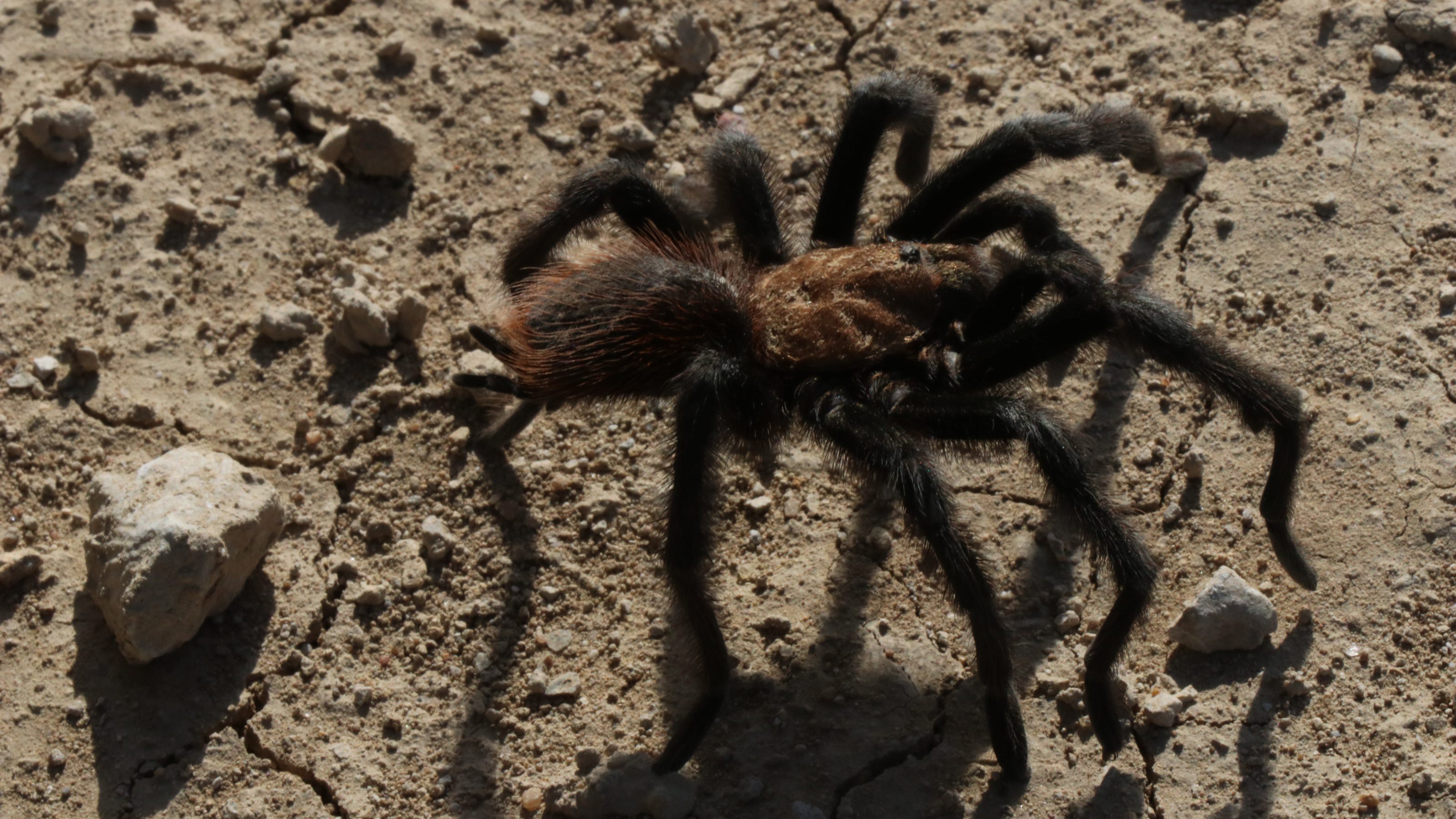news
'Hordes' of tarantulas coming to Texas. Where are you likely to see the fuzzy spiders?
It’s only after the early summer mating peak that male tarantulas begin to emerge in large numbers, roaming across roads and trails.
Published July 30, 2025 at 10:01am by Brandi D. Addison

If you’re hiking or camping in Texas during the next few months, get ready for what could be the experience — or fright — of a lifetime.
Across the United States, in California, Colorado, Kansas, New Mexico and Texas, tens of thousands of tarantulas will begin crawling out of their burrows in search of females, making for a fascinating, if a little creepy, display of the wonders of nature.
It’s tarantula mating season.
“If you’re lucky enough you can sometimes see them in hordes crossing the roads at certain times of the year,” Dan McCamish, a senior environmental scientist with California State Parks, told USA TODAY.
When is tarantula mating season in Texas?
In Texas, tarantulas typically mate between May and July, when males reach sexual maturity and begin preparing to leave their burrows. But just because mating peaks early doesn’t mean you’ll see them right away.
Why you’re most likely to spot tarantulas in late summer
It’s only after the early summer mating peak that male tarantulas begin to emerge in large numbers, roaming across roads and trails from late July through early September.
That’s because it takes time for mature males to fully develop and begin their search. Once they leave their burrows, they have one goal: find a female. During this time, they’re far more active and much more visible to humans — particularly around dusk or after rainstorms.
In many parts of the Southwest, late summer rainfall may also trigger activity, as moisture softens the soil and wakes up underground life.
So, while the mating season might technically peak in early summer, the sightings are just now reaching their peak.
Where are you likely to see tarantulas in the wild?
In the wild, tarantulas are most commonly spotted in open, dry areas such as:
- Grasslands
- Desert scrub
- Prairies
- Open fields
- Roadsides and trails at dusk
In Texas, sightings are especially common in the South and West, where arid conditions and open terrain make ideal habitat. They often emerge from burrows tucked beneath rocks, logs or grassy clumps and may be seen crossing roads or wandering through cleared land during their search for a mate.
Tarantulas avoid heavily wooded or urbanized areas. You’re far more likely to see them in remote parks, nature preserves, and ranchlands — especially after summer rains.
It's also possible that you may see them in trees
Are tarantulas dangerous?
Tarantulas may be a scary sight for some, but they do not pose a serious risk to humans — at least not the ones here in Texas.
North American species of spiders are venomous, but their bites usually have only mild effects on humans, according to the National Capital Poison Center. Bites feel similar to a bee sting and can swell, but unless the bitten person is allergic, a more severe reaction is rare.
Tarantulas are not known to bite unprovoked, so steer clear and avoid direct contact with the creatures. Their hairs can also irritate human skin on contact.
What to do if you come across a tarantula
During mating season, it’s not uncommon for a tarantula to wander into campsites or tents.
To gently and safely encourage it to be on its way, the best method is to find a stick and give it a “light tickle” on its abdomen to get it to move away.
“Just give it a light boop on the base of its abdomen and generally they’ll move in that direction,” McCamish told USA TODAY.

